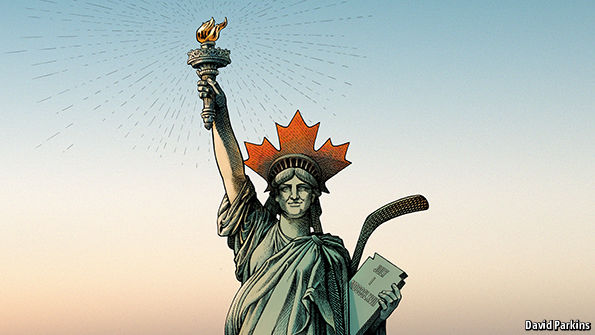
Gallup’s Jonathan Rothwell conducted a study toward the end of last year that found “those who view Trump favorably have not been disproportionately affected by foreign trade or immigration, compared with people with unfavorable views of the Republican presidential nominee. The results suggest that his supporters, on average, do not have lower incomes than other Americans, nor are they more likely to be unemployed.” Now, Rothwell is back with another study suggesting that the supposed “China Shock” is actually overblown. Rothwell writes,
…[O]ne important achievement of [Autor, Dorn, Hanson, 2013] is its innovative methodology and framework, which has allowed scholars to better understand how import competition affects local areas. Nonetheless, my analysis and extension — which greatly benefited from Autor et al.’s coding and data — conclude that their findings about the harm from import competition at the community level are not robust, beyond the manufacturing sector, and, even then, only in the later period. At the individual level, and consistent with results from Autor et al. (2014), I find that workers in import-intensive industries have a strong attachment to the labor force and are as likely to be employed as workers in other industries.
…Though [Autor et al.’s] paper makes an enormous methodological contribution and provides further and robust evidence that Chinese imports—rather than only technological change—reduced U.S. manufacturing employment, the evidence presented here suggests the paper’s most important findings do not withstand further scrutiny.
…If China had remained a communist country and closed to trade, it is quite likely that manufacturing workers around the world would have enjoyed higher wage growth. While manufacturing job loss probably would not have been as significant, the increased competition from China did not create labor market conditions that appear dramatically different than what workers face in other industries such as retail, restaurants and engineering firms. In fact, the evidence is clear that manufacturing work remains a source of relatively high pay, long tenure, and low layoff risk, despite the intensity of import competition (pg. 20).
What is likely surprising to many, Rothwell found that
for the 1990-to-2000 period, there is no evidence that import competition resulted even in manufacturing job loss. Indeed, many of the manufacturing-specific models show that import competition resulted in a large increase in the average wages of manufacturing workers. The positive wage effect is evident outside of the manufacturing sector, particularly for noncollege educated workers and males. Taken literally, these models show that import competition during the 1990s caused a substantial increase in wages for the average worker. These models also show that import competition increased employment growth for college-educated, nonmanufacturing-sector workers and population growth for people aged 35 to 64.
Of the 45 models with significant effects in the stacked regression, only five retain significance in the expected direction during 1990 to 2000, and each of these pertain to transfer payments. These results could be explained by the population growth of pre-retirement-age workers, as health problems and risk of retirement are increasingly sharply with age. Overall, it appears that import competition in the 1990s was, if anything, largely beneficial to the average worker in the local areas most exposed to competition (pg. 18).
A new job market paper deals another blow to the “China Shock” theory. Using microdata from the US Census Bureau, the author
showed that the employment of US manufacturing firms rose in response to increasing Chinese imports in US output markets. More exposed firms expanded employment (i) in manufacturing, as they hired production workers whom they paid higher wages, and (ii) in non-manufacturing, by adding jobs in R&D, design, engineering, and headquarters services. In other words, China caused a relative expansion of US employment in firms operating in industries that experienced the largest growth in Chinese imports. I argued theoretically, and provided reduced-form evidence, that this was possible through firms’ reorganization toward less exposed output industries, in which the US had a comparative advantage relative to China. In these output industries, firms expanded skilled employment by taking advantage of falling production costs due to increased offshoring to China.
The evidence provided in this paper indicate that the employment losses at the establishment level, measured by the previous papers (Acemoglu et al., 2016; Autor et al., 2013), were compensated by the employment gains that resulted from two sources. First, within-firm reorganization allowed US manufacutring firms to escape the negative impact of the China shock; US manufacturing firms reorganized their activities in many dimensions in response to the China shock. On the one hand, they reorganized their US activity from exposed to non-exposed US output markets. On the other hand, they reorganized their input sourcing as they replaced domestic suppliers with foreign suppliers and increased foreign direct investment. Second, employment at US manufacturing firms expanded in response to the combined effect of increased Chinese imports in US output and input markets. This is because increased imports in the input markets put downward pressure on US manufacturing firms’ cost of sourcing material inputs. Thus, the China shock to the firm’s input markets acted as a favorable cost shock that compensated for some or all of the negative impacts of the increased output market competition.
All of these suggest that the China shock impacted US manufacturing employment in a more nuanced way than simply increasing output market competition at the establishment level, which captures only the losses that resulted from the shock. Reorganization at the firm level and the combined effects of input and ouput market shocks can lead to net job creation. However, this may not involve the same workers in the same industries, in the same regions of the US or the same establishments of the firm (pg. 51).
When one considers the other benefits of trade, it becomes increasingly clear that globalization is not the demon it has been made out to be.




_0.jpg)




